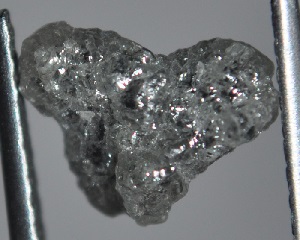Glossary of Terms ( D – L )
Click here to view diamond glossary terms with letters: A – C or M – Z
Date (report) – The date the grading report was issued. If GIA reports are older than 2006, you might want to get the diamond re-graded.
De Beers – a company involved in the mining, processing and marketing of diamonds. De Beers also functions as a diamond cartel, controlling more than half of the entire market. In recent years, it has revamped and re-positioned itself in lieu of losing raw diamond distribution and supply to new sources.
Depth – the distance between the table (the top facet) and the culet (the bottom facet) of the diamond, usually expressed in millimeters or as a percentage of the girdle diameter.
Depth % – For rounds it is the depth of the diamond divided by the average diameter and for other shapes it is the depth divided by the width of the diamond.
Diagram Plot – a diagram that shows the shape and cutting style of a diamond. Typically, you will see the layout of the individual facets in a 2D plot.
Dimensions – For round shapes, the dimensions are stated as “largest diameter – smallest diameter X depth” and for other shapes, dimensions are shown in reports with the format of “length X width X depth”.
Dispersion – Light that is refracted by a diamond that usually results in colored light. As refracted light exits the diamond, this phenomenon is also known as fire.
Eye-Clean – a jargon used to describe diamonds that have no imperfections visible to the unaided naked eye.
Eight-Cut – smaller, pavement diamonds which only feature 18 small facets instead of the 58-facet full cut.
Estate – A piece of jewelry that is being sold as 2nd hand.
Facet – the polished planes of a final, cut diamond. A full-cut round brilliant features 57 facets.

Fancy Color – the “color” characteristic of diamonds only apply to usual diamonds which should be colorless. However, there are rare diamonds which feature a deeper saturation of colors that can range from green through vivid pink to purple, even black.
Flawless – Absolutely no inclusions or blemishes observable under 10X. The pinnacle of clarity grades which demands high premiums.
Finish – Polish and symmetry grades representing the quality of the diamond’s surface condition, and the size, shape and placement of the facets.
Fire – technically known as dispersion. It describes the ability of diamonds to scatter white light into the colors of the rainbow.
Fisheye – is a phenomenon that is observed in shallow cut round diamonds. Affected diamonds appear to have a centrally dark circular pattern under the table resembling the eye of a fish.
Fluorescence – Diamonds placed in UV (ultraviolet) light or even strong sunlight might exhibit a unique property called Fluorescence. Usually you’ll notice that these diamonds glow bluish in color. Depending on the diamond properties and the exact wavelength of the UV light that passes through, a huge variety of other colors can be observed too.
GIA – Gemological Institute of America, the most renowned issuer of diamond certificates with its headquarters at USA, Carlsberg.
Girdle – the widest diameter of the diamond, situated between the crown and the culet. The girdle can be faceted, polished or unpolished.
Gemologist – a professional whose area of expertise is the study of different gemstones. These professionals rarely operate individually. They are usually a member of some associations or institutes, like the Gemological Institute of America (see GIA above)
Graining – Graining/grain lines reflect irregularities in the diamond’s structure. Colorless graining usually does not affect the clarity grade significantly. However, reflective graining that are white or colored will downgrade the clarity of a diamond.
Head – refers to the prongs that hold a diamond in its setting.
Hearts and Arrows – an optical pattern identifiable in some ideally cut brilliant cut diamonds. The presence of these patterning is often used as a marketing tool to demonstrate precision cut.
Inclusion – apart from blemishes, inclusions are the other types of imperfections that commonly appear in diamonds. The number, size, type and relief of inclusions defines the clarity of a certain diamond.

Heavily included rough stone for industrial uses.
Industrial bort – Low quality or very tiny diamonds are often used for industrial purposes. For example, industrial bort is usually used for grinding or cutting softer materials.
Internally flawless – the second highest clarity grade. Denotes a diamond that does not have any inclusions visible at 10X but allows the presence of minor blemishes on the surface.
Kimberley – a small town located in central South Africa. The town has gained worldwide fame thanks to the nearby diamond mine, commonly known as the “Big Hole”. The “Big Hole” has been considered the biggest cave dug by hand for decades.
Koh-i-Noor – probably the most well-known diamond ever. Today it is part of the British Crown Jewels.
Laser drilled – refers to a diamond that had been artificially enhanced in clarity to remove inclusions by means of a laser beam.
Length-to-width ratio – a ratio found by dividing the length and the width of a given diamond. It also expresses how round or square is a diamond. For other fancy shapes, it refers to the degree of being oval, rectangular or just simply elongated.
Loupe – a small magnifying glass used by jewelers worldwide to examine the quality goods. Standard magnification is tenfold. Loupes are simple tools that can and should be used by consumers too.
Can’t find what you are looking for? Check out the other lists of : A – C or M – Z







